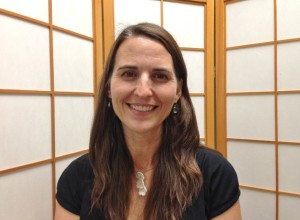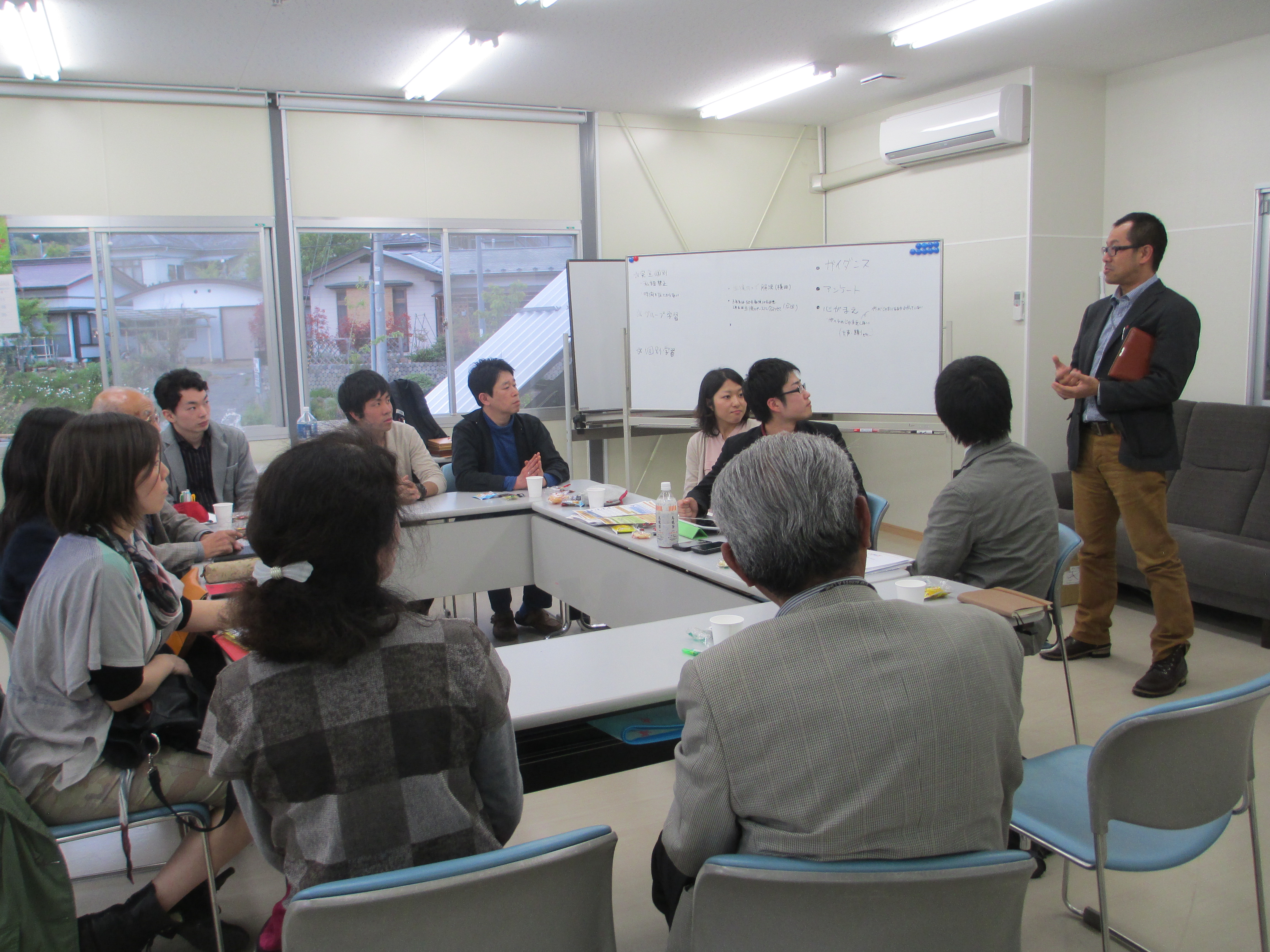CLAIR Magazine “JET Plaza” series: Ari Kaplan (Hyōgo)
Each month, current and former JET participants are featured in the “JET Plaza” section of the CLAIR Forum magazine. The September 2013 edition includes an article by JET alumn Ari Kaplan. Posted by Celine Castex (Chiba-ken, 2006-11), currently programme coordinator at CLAIR Tokyo.
*******

“I still remember the ceremony […] held for departing JET participants when I left my position as an ALT. […] I distinctly recall advising the audience members that I was leaving so that I could return someday.”
Originally from the US, Ari Kaplan (Hyogo-ken, Suzurandai, 1993-94) came to Japan upon graduating from Boston University. He is now a business consultant in New York City and the author of Reinventing Professional Services: Building Your Business in the Digital Market Place (Wiley, 2011), which Akishobo recently released in Japan as ハスラー――プロフェッショナルたちの革新. Learn more at AriKaplanAdvisors.com.
JET Perspective
I still remember the ceremony that the Hyogo Prefectural Board of Education held for departing JET participants when I left my position as an ALT at Kobe Kohoku High School in 1994. The host asked each of us to line up facing the audience, pass a microphone to one another, and share our reason for leaving. I distinctly recall advising the audience members that I was leaving so that I could return someday.
When Akishobo translated my second book, Reinventing Professional Services: Building Your Business in the Digital Workplace (Wiley 2011), into Japanese and released it in Japan last fall, I felt like I had somehow kept my promise. I was also excited to have the opportunity to publicly dedicate it to the JET Programme and the Hyogo Prefectural Board of Education.
I was only 20 years old when in July 1993, following my graduation from Boston University, I took that Japan Airlines flight from New York to Tokyo. Jetlagged the day after I arrived, I went on an early-morning walk into the Tokyo Metro to explore and noticed that there were a few homeless individuals living in refrigerator boxes down below.
As a resident of a major metropolitan city, this sight in Shinjuku station did not surprise me. What struck me, however, was that outside of each box sat a pair of shoes, presumably worn by the occupant inside, highlighting the individual’s personal respect and the extraordinary nature of the place to which I had traveled. Read More
JETwit mentioned in Japan Times article “JET Alumni: Advocates for Japan”
A great Return On JET-vestment article that ran today in the Japan Times:
JET alumni: Advocates for Japan
Program lauded for continuing to bear cultural fruit, friendships
BY AYAKO MIE
STAFF WRITER
Here’s the full article: http://www.japantimes.co.jp/news/2013/09/03/national/jet-alumni-advocates-for-japan/#.UiaU_GRATv0
Here’s the quote:
Steven Horowitz, who was a JET in Aichi Prefecture from 1992 to 1994, likened his former colleagues to a global expat community of around 60,000 people in terms of their shared affection for Japan. “I think it is going to pay . . . dividends for years and years to come,” he said.
To consolidate the alumni network, Horowitz runs JETwit.com, a website that accumulates information about alumni and Japan-related jobs.
Life After JET: The Write Stuff by Ashley Thompson
Recently posted to the JETAA Oceania Facebook group by Eden Law:
The JET Programme has led to many opportunities and careers, sometimes rather unexpectedly. This is the first in a series of articles by former JETs about their lives after participating on the programme, and how it has shaped their careers and paths. We hope that it will prove useful as an insight for potential applicants into what we as ex-JETs got from our experience, and maybe provide some nostalgic memories for others. Please feel free to contact us if you want to write about your own experience!
Our article comes to us courtesy of Ashley Thompson, who was a former JET in Shizuoka-ken (2008-10). Since leaving JET she has built up a writing career which includes being an editor of Surviving in Japan, a popular blog for expats in Japan; and as a Community Manager for Nihongo Master, an online Japanese language learning site. Many thanks to Ashley for her time and support!
I never expected that going to Japan with JET would launch my writing career or bring about the opportunities it has. And fainting at school was the catalyst. It happened on a cool October day, just over a year after I arrived in Japan. A student had come to the door of the staff room to ask me something, and after standing up from seat my vision started fading and my head was cloudy. I lowered myself to the floor before I lost consciousness. I was rushed to the nurse’s room on a stretcher and sent home for a few days.
The first day back at school I developed a fever and was promptly sent home. The light-headedness returned stronger at that point, followed by motion sickness and constant nausea. I was forced to take a longer sick leave, month after month, as I visited various doctors in an attempt to get a diagnosis. They either found nothing or told me it was “all in my head”. I knew they were wrong, but in Japan a doctor’s word is like God’s. Read More
CLAIR Magazine “JET Plaza” series: Marie-Claire Joyce (Nagasaki)
Each month, current and former JET participants are featured in the “JET Plaza” section of the CLAIR Forum magazine. The August 2013 edition includes an article by JET alumn Marie-Claire Joyce. Posted by Celine Castex (Chiba-ken, 2006-11), currently programme coordinator at CLAIR Tokyo.
*******
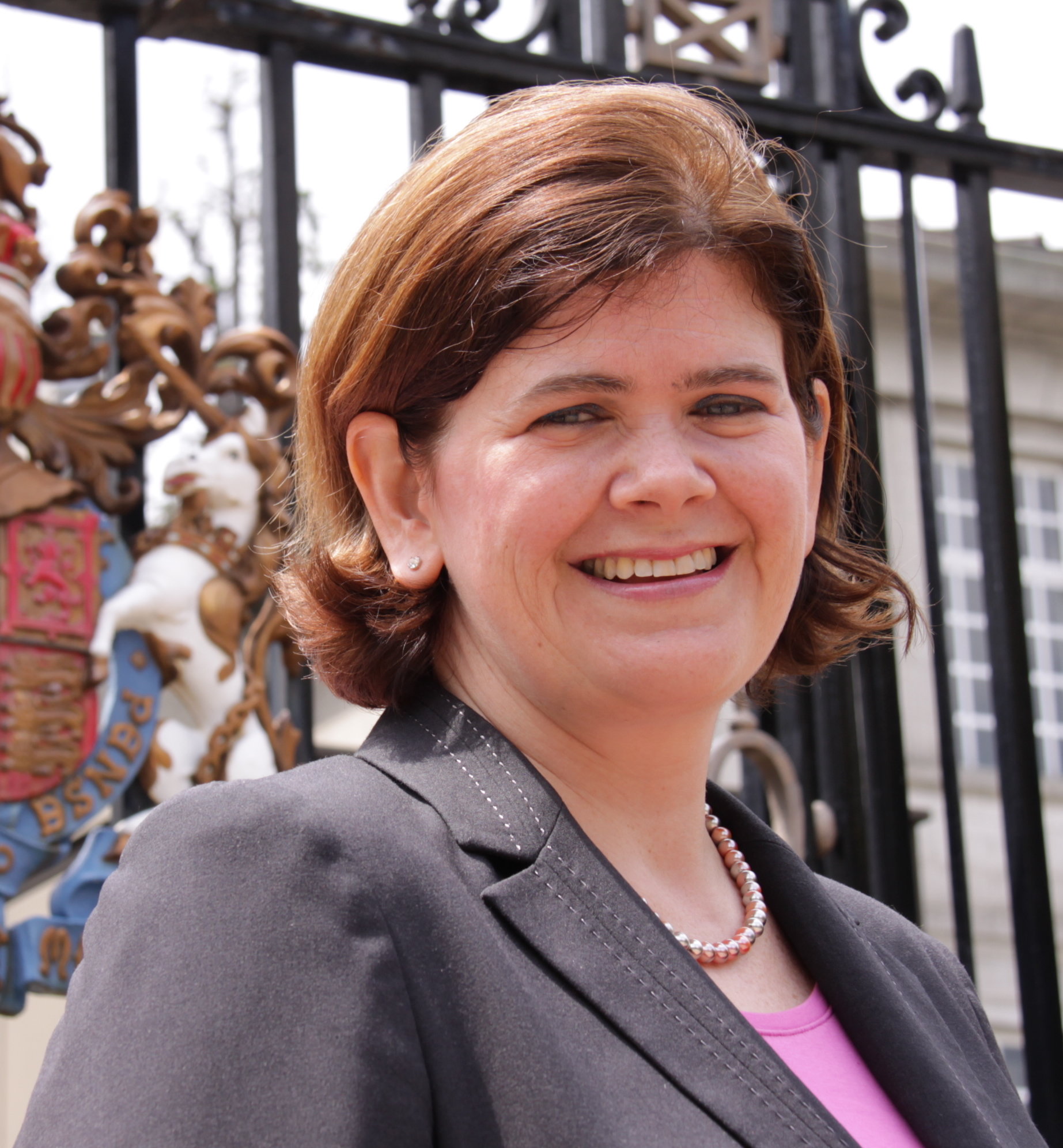
“I may never be the British Ambassador to Tokyo, but I am proud to have been the first British Ambassador to Hasami on the JET Programme”
Marie-Claire Joyce (Nagasaki-ken, Hasami-cho, 1991-93) is from Newcastle-Upon-Tyne (UK). She studied French & Italian at the University of Manchester before joining the JET Programme as an ALT in Nagasaki Prefecture. After two years, she left Japan to follow a postgraduate course in France specialising in International Trade with Asia before entering the British Foreign & Commonwealth Office. Marie-Claire has worked both in London and overseas (Tokyo, Tunis and Jakarta) on a number of areas including trade promotion, protection of British people overseas, crisis management, political and economic work. 22 years since joining the JET Programme and 15 years since her first posting to Tokyo as a diplomat, she has recently returned to the British Embassy in Tokyo where she heads up the Economic and Trade Policy Team.
Rural Diplomat
I stumbled across the JET Programme in the same way as I stumbled across what was to be my future career in the British Diplomatic Service. A friend passed me a brochure and told me I was the ideal kind of person to be on JET and then later the Foreign & Commonwealth Office (FCO) : experience travelling and living overseas, teaching experience, keen on learning foreign languages and so on. I applied for both and so the adventure began.
22 years ago this July, 29th to be exact, I boarded a JAL plane at London Heathrow bound for Tokyo, like many more JET participants will be doing this Summer. Little did I know then that it would be the first of many flights to Japan, and that Japan would become a real part of my life. I am quite sure that had I not joined JET, my life would be very different today. I was to be the very first AET at Hasami High School in the pottery town of Hasami in a beautiful rural part of Nagasaki prefecture. I had no future plans, having just graduated from Manchester University. The world was my oyster I had been an assistante d’anglais as part of my French degree and was thrilled at the idea of spending more time overseas discovering a new country through teaching.
I learned more than I bargained for. Not just a new language and culture but also about myself. Resilience, patience and determination became my best friends. I went through all the stages of culture shock : I loved Japan, I hated Japan, I couldn’t understand the Japanese, I wanted to be Japanese, I wanted to leave (and I packed several times in the first 6 months!), I wanted to spend the rest of my life in Japan. I felt excluded (I got upset being called a “gaijin”). I wrote a letter for the town newsletter to indroduce myself and tell everyone why I had come to Hasami. It was a real challenge to settle and integrate. In fact the same kind of challenge I go through in my career now as I change country every four years.
JET alum helps produce “The Birth of Sake” documentary

Tara Hohenberger, who first fell in love with saké and the Japanese culinary world as an ALT in Nara (2001-2003) wrote to us about a film project she is helping produce. The documentary The Birth of Saké profiles the production seasons and lives of the workers at Tedorigawa, a fifth-generation, family-owned sake brewery in Ishikawa, Japan. Tedorigawa has been producing some of the world’s top award winning sakés since 1870 and still utilizes very traditional brewing methods.
Tara is working on the project with filmmaker Erik Shirai, who was a cinematographer on The Travel Channel’s No Reservations’ with Anthony Bourdain. The crew was first invited to the brewery in August of 2012 and was intrigued by the intense and relatively unknown process (even within Japan) of traditional saké making. Led by Brewmaster Teruyuki Yamamoto, the team of brewers is made up mostly of migrant farmers who grow rice in the summers and return to the brewery in late October to begin an intense six-month period of saké production. They will live under the same roof and eat three meals a day together. At the most intense time, when they brew the ultra-premium Daiginjyo variety they will barely have time to sleep.
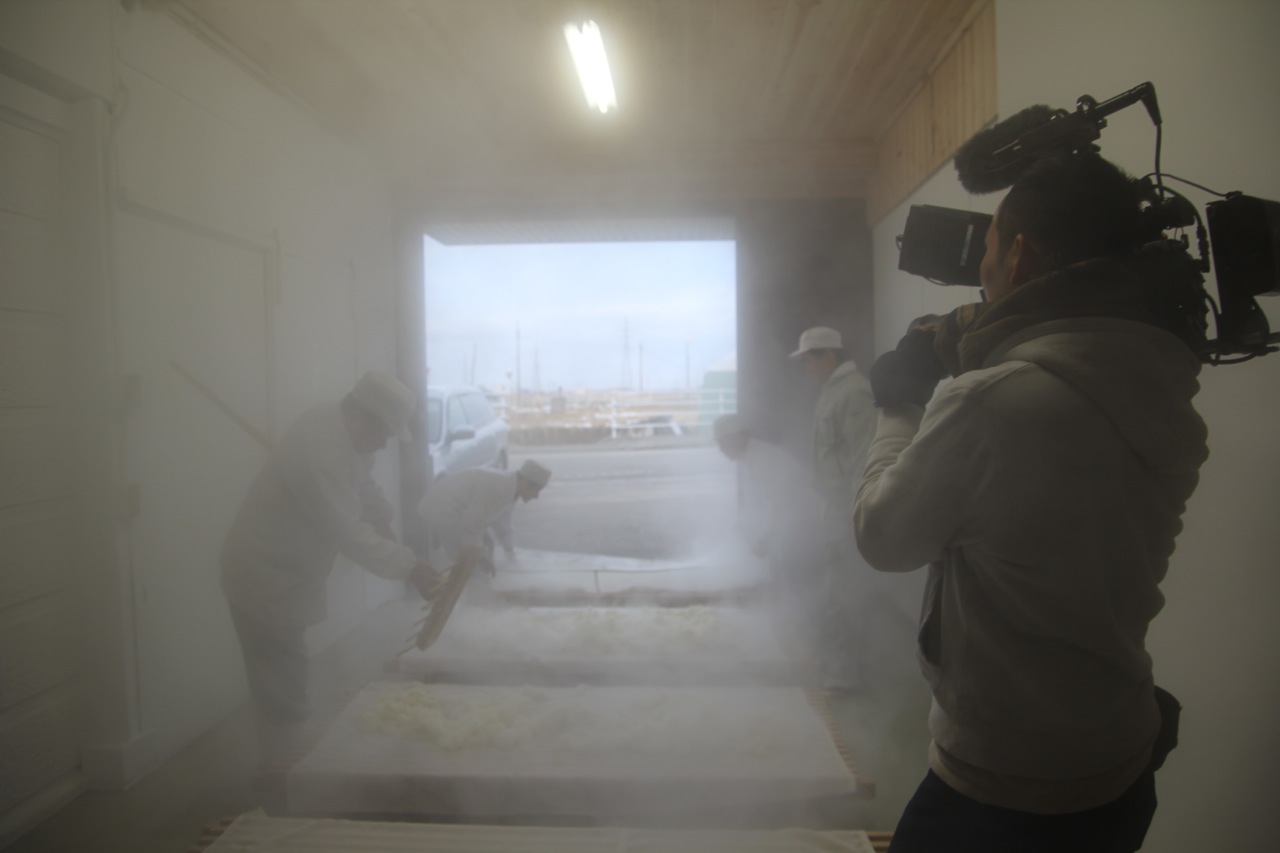 In January 2013, they returned to Ishikawa and were granted permission to spend several weeks living amongst the workers at the brewery. It allowed them a rare window into a cast of vibrant and dynamic characters and fueled their interest in painting a deeper portrait of the people behind the product. Shirai’s film captures this little understood world with his signature lush visual aesthetics in the stillness of winter in northern Japan.
In January 2013, they returned to Ishikawa and were granted permission to spend several weeks living amongst the workers at the brewery. It allowed them a rare window into a cast of vibrant and dynamic characters and fueled their interest in painting a deeper portrait of the people behind the product. Shirai’s film captures this little understood world with his signature lush visual aesthetics in the stillness of winter in northern Japan.
On July 9, they launched a Kickstarter campaign running through September 2, 2013, to complete the project. They hope to raise $50,000, which will allow a visit to film the Brewmaster in his hometown of Noto, Japan to illustrate the contrast of the intense life he leads inside the brewery for six months a year, with that of his land, his rice fields, his wife, children and his grandchildren. The film will also capture the critical moment when the workers return to the brewery to begin the production cycle again. Funding will also cover editing, musical composition, licensing, equipment rentals and other post-production costs.

You can view the trailer on The Birth of Saké’s Kickstarter page at
http://www.kickstarter.com/projects/1802764272/the-birth-of-sake
The filmmakers greatly appreciate your help in spreading the word about the film. Follow them at facebook.com/birthofsake + on Twitter: @iamwhatieatTV
USJBF selects JET alum Laurel Lukaszewski for new “Strengthening the JETAA USA Network” initiative
Remember the job listing for the Part-time Project Director with the US-Japan Bridging Foundation (USJBF) to support JETAA USA growth? The USJBF has announced that it has selected Laurel Lukaszewski (ALT Kagoshima-ken, 1990-92) for the position for its new initiative “Strengthening the JETAA Network and Connecting Next Generation Leaders.”
Shojiki ni itte, it’s hard to imagine anyone better suited for the role. Laurel has maintained a strong connection with Japan and the Japan-US community since here time on the JET Program by previously serving on the Board of Directors for the National Association of Japan-America Societies (NAJAS), as the Executive Director for the Japan-America Society of Washington, D.C, and as a Program Director of the Japan-America Society in Seattle. She currently lives in Washington, D.C. where she actively participates on the Board of the National Cherry Blossom Festival and JETAADC. You can see her in this panel discussion with fellow JET alums Jim Gannon (Ehime-ken, 1992-94) and Anthony Bianchi (Aichi-ken, Inuyama-shi, 1988-89) from the 2011 JETAA National Conference in D.C.
Laurel (who is also a sculptor–see her work here) officially started working Tuesday, July 9. Here is the official announcement from the USJBF:
July 11, 2013
The U.S.-Japan Bridging Foundation (USJBF), is pleased to announce that Laurel Lukaszewski has been hired as Project Director for its new initiative “Strengthening the JETAA Network and Connecting Next Generation Leaders.” Funded by the Japan Foundation Center for Global Partnership (CGP), the purpose of the project is to build infrastructure in support of the Japan-Exchange and Teaching Program Alumni Association, United States of America (JETAA USA) and enhance its impact promoting U.S.-Japan relations.
Laurel is an alumna of the JET Programme (Kagoshima-ken, 1990-1992) and has a solid understanding of U.S.-Japan relations, the U.S.-Japan community and how nonprofit and membership organizations are governed and run. After completing the JET Programme and receiving an M.A. in Asian Studies, Laurel embarked on a nine-year career with the Japan-America Societies in Seattle and Washington, D.C.. In 2005, Laurel left her position as ED of the JASW to pursue a career as an artist. She has maintained her ties to the JET Programme and U.S.-Japan community by serving as an active member of the JET Application Review and Interview committees for over thirteen years. Laurel served on the Board of Directors of the National Association of Japan America Societies (NAJAS), and has been on the National Cherry Blossom Festival Board of Directors since 2002. Paige Cottingham-Streater, Executive Director of the U.S.-Japan Bridging Foundation said, “Laurel is a valuable addition to our team and will bring a unique understanding about the JET community and its potential to promote a strong U.S.-Japan relationship.”
The U.S.-Japan Bridging Foundation, a 501(c)(3) nonprofit organization, awards scholarships to U.S. undergraduate students to study for one semester or academic year in Japan. The Foundation grows global leaders to help prepare America’s young people to assume future leadership roles in business, education, international and public affairs and other professions.
URL: http://www.bridgingfoundation.org/news/new-project-director-to-facilitate-jetaa-capacity-building
CLAIR Magazine “JET Plaza” series: Mark Flanigan (Nagasaki)
Each month, current and former JET participants are featured in the “JET Plaza” section of the CLAIR Forum magazine. The July 2013 edition includes an article by JET alumn Mark Flanigan. Posted by Celine Castex (Chiba-ken, 2006-11), currently programme coordinator at CLAIR Tokyo.
***********

“It was a wonderful feeling to be able to walk the same pathways, both physical and metaphorical, that I had first walked a decade before. Much has changed since then, in Japan and in my own life, but I will always remain incredibly thankful to CLAIR and the JET Programme for this “Twice in a Lifetime” chance.”
A native of Pittsburgh, PA, Mark Flanigan (Nagasaki-ken, Hirado-shi, 2000-04) spent four years in Nagasaki Prefecture as an ALT and PA . He applied for JET as part of his long record of work, study and travel abroad, which has given him a deeper understanding of global affairs and insight into different languages, people and cultures. Mark Flanigan currently serves as Program Director with the Japan ICU Foundation (日本国際基督教大学財団) in New York City and is a first-year Resident of International House of New York. He came to New York after two years in Tokyo, where he earned his MA in Peace Studies as a Rotary International Peace Fellow at International Christian University (ICU). Mark has also been a US Army Officer, Presidential Management Fellow (PMF), and CSIS Young Leader.
Twice in a Lifetime
Like the great majority of JET programme participants, I look back with fond recollections on my time in Japan. Unlike most of them, however, I also had a second chance to come back and live in Japan once again. It was an amazing experience, and one which I never planned on, which allowed me to compare my two very different “Japans.” Although I lived in that same country twice, the differences in time, location and purpose made for a very insightful analysis of how both Japan and I had changed in the intervening years.
My first years in Japan were spent as a new ALT who had never been to Asia, much less lived there. While I had some experience teaching English in the U.S. and Mexico, I was not an Asian Studies major and was not at all familiar with the Japanese language. Nonetheless, I grew to love my new life in Hirado, Nagasaki Prefecture. I immersed myself in the community, getting involved in the local karate dojo as well as participating in the various seasonal festivals and extracurricular activities like speech contests, international days and so on. My original plan to stay just one year changed into multiple re-contracting, and I actually ended up spending a total of four years on JET (teaching both in Hirado as a municipal ALT and then as a Teacher-Trainer at the Prefectural Education Center in Omura City.)
Returning to the U.S. after four years in Japan, I became busily focused on other areas and gradually lost touch with my various connections to JET and Nagasaki. I went to graduate school for Public Policy at George Mason University in the Washington, DC area and started serving with the U.S. Government after graduation. My life continued to progress in this new direction, which was successful enough and still internationally focused, but less-connected to Japan with each passing year. I found myself forgetting more and more nihongo and generally feeling like my JET experience, while a wonderful time, was becoming a kind of closed chapter in my life. Read More
JET alum finds culinary success with Ramen Shop in Oakland, CA
Thanks to JETAA Northern California Vice-President Mark Frey (Kumamoto-ken, 2002-06) for sharing the following:
At our JETAA Northern California Oakland Ramen Nite tonight, I found out that Jerry (“JJ”) Jaksich, one of the owners/chefs of Ramen Shop, was a JET! (possibly Ebestsu, Hokkaido)
Ramen Shop is getting a ton of buzz in the Bay Area because three alumni of the legendary Chez Panisse started the restaurant. Wait times for table are often an hour. Here are some recent articles about Jerry and Ramen Shop:
Review/overview of Ramen Shop:
http://www.sfgate.com/restaurants/diningout/article/Ramen-Shop-a-hot-spot-in-Oakland-4301369.php
Interview with Jerry about his “ramen epiphany” experience in Japan:
http://insidescoopsf.sfgate.com/blog/2012/09/06/ramen-shop-guys-talk-epic-bowls-japan-experiences-and-local-ramen/
A newsletter with an interview Jerry did with a local izakaya master in 2007, while on JET I assume (scroll down):
http://www.city.ebetsu.hokkaido.jp/kokusai/files/Everyday%20Ebetsu%20No.3.pdf
Blog about the Japanese noodle maker they use:
http://umamimart.com/2012/10/richmen-ramen-shops-noodle-making-machine-from-japan/
JETAA USA Disaster Relief Fund Update – 06.01.13
Jim Gannon (Ehime-ken, 1992-94), Executive Director of the Japan Center for International Exchange (JCIE/USA) and a member of the JETAA USA Disaster Relief Fund Committee, was recently in Tohoku for work and shared the following update regarding one of the projects that JETAA USA helped fund:
Jim says he met with Kodomo no Empowerment Iwate (click here for their Facebook page) and also had a chance to talk with two representatives of the Rikuzentakata Board of Education and learned:
- The BOE and many people in the prefecture see the Manabi-no-heya project we supported as a crucial element of the town’s recovery, and the Ministry of Education has selected it as a model project for introduction around the country.
- They currently have 206 students enrolled in Rikuzentakata alone, and have expanded to Kamaishi, Ofunato, Miyako, and other affected cities, adjusting the program to fit local circumstances.
- The big news they were happy about was that one of the students from the tutoring program was just ranked #1 out of 600 on the Rikuzentakata high school entrance exams.
- The Ministry of Education and private source have provided funding for the project that is many multiples of JETAA USA’s, but the organizers and the city officials all credit JETAA-USA as providing the seed money to help get this off the ground.
Here’s a news video about the project (in Japanese – if someone wants to post a summary in some form that would be great, btw):
Photo #1: From Kodomo no Empowerment’s gathering of their Rikuzentakata program managers (senior tutors), on Saturday. They got together to discuss how to improve the program, discuss student management issues, etc. The fact that they were sacrificing an entire Saturday for this shows just how committed they are. The person standing is Iwate Prefectural University Professor Katsuhiko Yamamoto, who heads Kodomo no Empowerment.
Photo #2: A student named Masako who was a student in the Otsuchi program, which is held in a temporary housing unit. She is showing off her desk where she had been studying English. She just enrolled in Nagoya College of Foreign Languages, an extraordinary triumph for a student from a small town like this. She seems to be taking some time to volunteer now with a development NGO in the Philippines in order to give back and also to brush up her English.
JET alum Roland Kelts column in Time Magazine on Japan’s Identity Crisis and Right-Wing Rhetoric
********
A thought provoking article by JET alum author and writer Roland Kelts(Osaka-shi, 1998-99) from the current issue of Time Magazine.
The Identity Crisis That Lurks Behind Japan’s Right-Wing Rhetoric
Here’s a quote:
“Japan is a country whose identity has been bowdlerized, hollowed out by a dream of Western dominance that no longer exists. It may make sense to see its recent surge in nationalism as a dumbed-down version of Japanese adolescence. This is a country spun around by its own single-minded pursuit of progress, and it has no idea who it’s supposed to be today.”
Here’s a link to the full article: http://world.time.com/2013/05/31/the-identity-crisis-that-lurks-behind-japans-right-wing-rhetoric/
CLAIR Magazine “JET Plaza” series: David Namisato (Aomori)
Each month, current and former JET participants are featured in the “JET Plaza” section of the CLAIR Forum magazine. The June 2013 edition includes an article by JET alumn David Namisato. Posted by Celine Castex (Chiba-ken, 2006-11), currently programme coordinator at CLAIR Tokyo.
***********
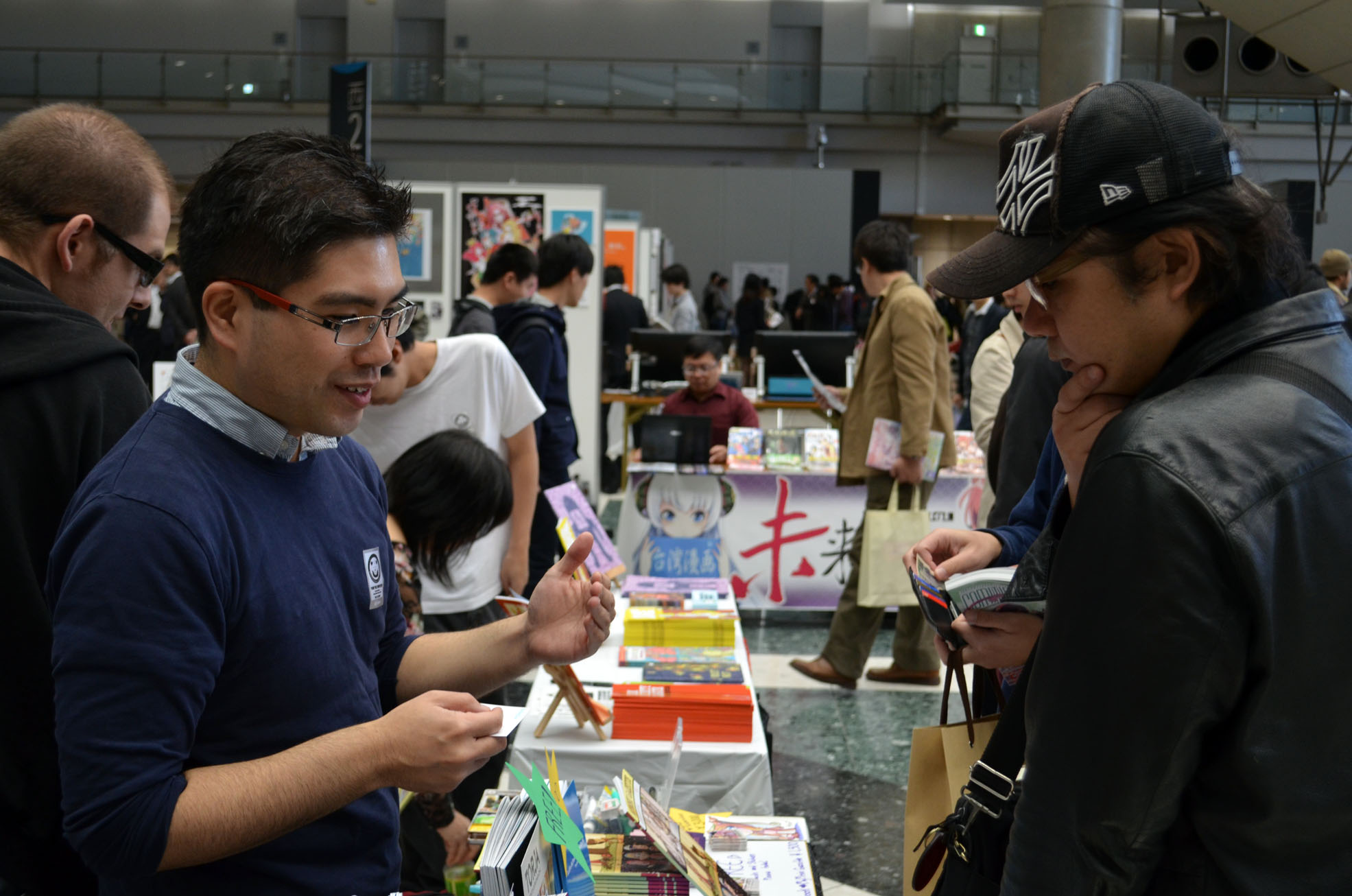
“I went on the JET Programme because I had quit art, but I returned to art because I went on the JET Programme, and thanks to that, here I am, over a decade later, an illustrator and comic book creator, with my JET experience influencing many of my works.”
David Namisato (Aomori-ken, Ajigasawa Town, 2002-04), is from Toronto, Ontario, Canada. He came to Japan on the JET Programme looking for a different career path after animation school, and spent two years in a rural town of Aomori as a CIR. Back in Canada, he started a comic series about the JET Programme experience for the JETAA Toronto Newsletter. Life After the B.O.E. quickly gained popularity inside and outside the JET community, to become a book in 2011. David is now a professional illustrator and has just released his new fantasy comic The Long Kingdom #1.
My Long Journey to the Beginning
In October of 2001, having become disillusioned with art, I decided to drop out of animation school, and to try something completely different and applied to the JET Programme.
Fluent in Japanese and looking for translation and interpretation experience as well as to transition in to a more planning and administrative career, I thought the position of Coordinator of International Relations (CIR) would be a good fit.
I was admitted to the JET Programme in 2002 as a CIR, and went to Japan. However, my contracting organization, Ajigasawa Town in Aomori Prefecture, used CIRs as elementary school English instructors. I had no planning or administrative duties beyond curriculum design and lesson planning, nor did I have translation or interpretation work. Rather, I was entrusted to teach English to children grades one through six at six of the town’s elementary schools.
As an elementary school English instructor, my art skills that I had abandoned were quickly resurrected and came in quite handy as I would use drawings to explain difficult vocabulary and grammar to my students. Slowly my joy of drawing returned, and as it returned, I also began contributing covers to the Aomori AJET newsletter.
In the spring of 2005, six months after my two years as a CIR ended, I decided to give art another try, and I started work as an illustrator creating illustrations and comics for children’s science, and history magazines in Canada. Read More
UK JET alum a finalist for Pearson National Teaching award
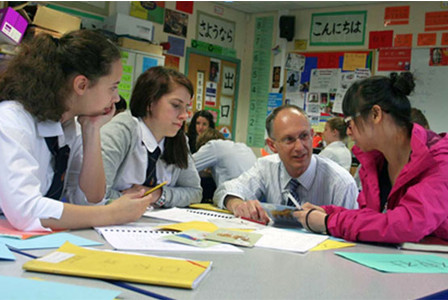 Via the JETAA UK website:
Via the JETAA UK website:
An ex-JET, Crispin Chambers (Hyogo-ken, Awaji-shima), who now teaches Japanese at Tavistock College in Devon has won a teaching award for the South West of England. He is now a finalist for the Pearson National Teaching awards 2013. This is the first time a teacher of Japanese, and an ex-JET has been nominated, and JETAA would like to extend our warmest congratulations!!
Crispin was originally a JET on Awaji Island for 2 years and then became JET programme co-ordinator for a year at CLAIR in Tokyo. After returning to the UK, Crispin gained an MA in Japanese at Sheffield University followed by a PGCE at Nottingham University. He has been teaching Japanese and French at Tavistock since 1996, and has trained several other teachers of Japanese. His lessons are inspiring and fun, and were described by the Teaching Awards judges as “a joy to watch”. You can see his entry and leave him a message here:
You can learn more about Crispin’s fantastic Japanese lessons on a case study of the school written by the Japan Foundation in 2011. Click here orhere to read it.
There are currently two former Tavistock College students on the JET Programme in Saga and Sendai, so Crispin has gone on to inspire the next generation of JETs.
JET alum Jim Gannon continues his work on behalf of JCIE in support of Rikuzentakata and other areas
***************
Via the Japan Center for International Exchange’s Facebook page. A nice post about the work that Jim Gannon (Ehime-ken, 1992-94), Executive Director of the Japan Center for International Exchange (JCIE/USA), has been doing in Tohoku on behalf of his organization. Jim is also a member of JETAA USA’s Board of Advisors and the JETAA USA Disaster Relief Fund Committee:
JCIE/USA’s Jim Gannon was in Tohoku last week, where he met with grantee AidTAKATA, an NGO that operates Radio FM Rikuzentakata to bring local news, music, and informational programs to people living in this hard-hit area. The station is the only source of local information for many residents in temporary housing, and it is working to strengthen community ties.
During his visit, the station featured a program with a lawyer who provides advice on the legal issues people in the disaster zone have to cope with (rebuilding regulations, insurance settlements, land titles, etc.). They also briefly interviewed Gannon during the program and took the opportunity to express their gratitude to all of the donors to the JCIE fund.
While on air, a small earthquake struck and the announcer immediately provided information on the epicenter and strength and to reassure listeners.
Former AJET Chair Announced as Senior Staff of Osaka Prefectural BoE’s New English Education Reform Team

Former AJET Chair Matt Cook (Osaka-fu, 2007-12) receives his appointment to the Education Reform Team for Osaka Prefecture’s Board of Education.
Former AJET Chair Matthew Cook (Osaka-fu, 2007-12) has been announced as “Shusa” (“Senior Staff”) at the Osaka Prefectural Board of Education. His role will be working with all levels of English Educational Affairs and working as a member of the new English Education Reform Team.
Matt may be the first ever non-Japanese person to hold a senior level full-time position at a Board of Education in Japan*. (If anyone is aware of other examples, please post in the comment section.) Among other things, it is also encouraging to see a JET alum with an opportunity to play a substantive role in English education reform in Japan.
Matt has spent the past ten months working for the Osaka Prefectural Board of Education as a the Program Coordinator for their Native English Teacher (NET) Program (somewhat akin to being a JET Program Coordinator at CLAIR) following his completion of five years as a JET ALT in Osaka-fu and serving one year as AJET’s national council Chair.
Omedetou, Matt-san! Ganbatte kudasai and yoroshiku onegaishimasu!
Here’s a link to the article about the announcement in the Yomiuri Shimbun (Japanese only): http://www.yomiuri.co.jp/kyoiku/news/20130522-OYT8T00381.htm (If anyone readers could provide a short summary in the comment section, by the way, that would be greatly appreciated.)
*Note: I learned there have been other former JETs and other non-Japanese who worked as advisors and in other roles for the Osaka Prefectural Board of Education. However, my understanding is that none of them worked at the policy-making level. Here’s a 2003 article from The Guardian that quotes one in particular who seemed to have some good insights into reform and Japanese language education, Huw Olphant: http://www.guardian.co.uk/education/2003/jan/30/tefl Huw currently works as Head of Society and English Education for the British Council in Japan and was apparently mentioned in Importing Diversity, a book about the JET Programme published in 2000.
*********
Update 06.01.13
*********
Thanks to current JET Kevin McCoy for summarizing some of the above Daily Yomiuri article:
このうち、元滋賀県立高英語教諭でハーバード大教育大学院で教育修士号を得た武田浄さん(46)と、府内で外国語指導助手などを約6年間務めた米国籍のマシュー・クックさん(34)の2人を、この日、任期付き職員として採用した。他の5人は、英語に堪能な府教委職員で、従来の担当と兼務する。
Two the seven team members, Takeda Kiyoshi (46), a former English teacher at Shiga Prefectural High School, who received his Master’s degree at Harvard University Graduate School, and Matthew Cook (34), an American who worked for approximately 6 years as an ALT for the prefecture, were hired as “shokuin” (staff) with a limited period of appointment. The other 5 members are all staff at the prefecture’s Board of Education with exceptional English skills who will also serve their usual “tanto” (staff) positions.
Kevin also found the following report which is a little more specific with regard to titles:
http://www.nnn.co.jp/dainichi/news/130521/20130521032.html
同チームは7人で構成。これまで英語教育に携わってきた職員に加え、ハーバード大教育大学院で教育修士号を取得し、国内の公立中高で教諭経験がある武田浄さん(46)と、バージニア工科大卒で府教委の外国人英語指導員などに就いてきた米国国籍のマシュー・クックさん(34)を、それぞれ参事と主査で任期付き採用した。武田さんの任期は2016年3月末までで、クックさんの任期は2015年3月末まで。
The team is made up of 7 members. In addition to staff who have been involved in English education until now, Kiyoshi Takeda (46) […] and American national […] Matthew Cook (34) were each hired as “sanji” and “shusa”, respectively. Takeda’s appointment is until the end of March 2016, and Cook’s appointment will last until the end of March 2015.
Hawaii JET alum seeks to interview Ehime JET alums via Skype
The below is a request from Eliot Honda (Ehime-ken, 2009-2012) who is seeking to interview other Ehime JET alumni as part of a project aimed at re-establishing the Ehime Kenjinkai in Hawaii:
My name is Eliot Honda, I am a former ALT in Uwajima city. I was there from 2009-2012, I had a blast and learned a lot about Uwajima, and Ehime in my three years. I found out that my home, Hawaii has deep ties to Ehime dating as far back as Japan’s first interaction with a Head of State. King Kalakaua and Date Munenari would meet during Kalakaua’s trip to Japan.
Since returning I’ve attempted to stay active in JET and in international exchange. My wife and I have been working to rebuild the Ehime Kenjinkai (Ehime Prefecture Club.) One of the things we talked about doing is a series of videos on the Ehime area. I wanted to add a bit of JET in there, since I’ve also become a board member of the JET Alumni Association in Hawaii. I wanted to do a screen cap of Skype/Facetime interviews and get former/present JETs to talk about the area in Ehime they lived in. A bit about the history, the landscape, the people, the attractions, and overall lifestyle of the area they live/lived in.
Ehime and JET hold a very special place in my heard, and Uwajima has become a 2nd home for me; a place I can always return to. (And not just because my wife is from there.) I have so many friends, and now family in Uwajima. This prefecture is rarely visited, but has a lot of beauty in it, and the JET Program is constantly on the chopping block, and I think people outside of the program miss the value of the program.
If you’re interested in doing an interview (which will eventually go on YouTube) and also helping to show the beauty of Ehime and just how helpful the JET Program can be for international exchange, please email me.
Thank You,
Eliot Honda
Email: eliot.honda [at] gmail.com
Here are some previous JETwit posts with Eliot’s videos about JET and Ehime. And here is a JQ Magazine “Life After JET” interview with him.

